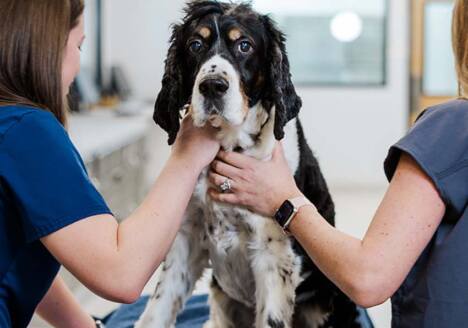Xylitol Toxicity: How to Keep Your Dog Safe
While most pet parents are aware of the dangers of chocolate toxicity for pets, the perils of xylitol toxicity may be new to them. With Halloween just around the corner, it’s a good idea to bone up on the increased danger of accidental poisoning-by-treats. Emergency veterinarian Dr. Leanne Dileo of Veterinary Referral Center of Central Oregon discussed the issue on Facebook Live with veterinary dermatologist Dr. Jennifer Bentley.
Xylitol Is No Sweet Treat for Dogs
Xylitol is an artificial sweetener commonly found in human treats such as sugar-free gum and mints. When a dog gets into a pack of Trident or Ice Breakers, her canine system mistakes the artificial sweetener for true sugar. The result is a release of insulin, which functions to lower the blood sugar. Unfortunately, this drop in blood sugar can cause the dog to become very sick.
It depends on the brand, but in general, even a very small amount is highly toxic to dogs. A stick or two or even a couple of cubes is enough to cause a big problem.
Read the Peanut Butter Label
Peanut butter is a go-to for pill-taking and homemade treats. As with many people foods with high fat content, an excess of peanut butter can make your pet vulnerable to conditions such as pancreatitis. Small amounts, though, have traditionally been worry free. Sadly, while peanut butter is not among foods commonly toxic to pets, many peanut butter manufacturers have started to include xylitol in their peanut butter brands. Be sure to read the label before letting your dog lick the peanut butter spoon.
What Are the Signs of Xylitol Toxicity?
The first tell-tale sign of xylitol poisoning is often an empty wrapper. Even if your dog seems perfectly healthy and exhibits no signs of distress, an empty wrapper indicates ingestion, and requires action. Notable signs of xylitol toxicity include abnormal behavior such as:
- Weakness
- Lethargy
- Inability or difficulty walking
- General wobbliness
With high levels of toxicity, your dog may experience extreme symptoms including tremors and seizures.
What Do I Do If My Dog Eats Xylitol?
Xylitol poisoning must be addressed as soon as possible. If you suspect ingestion, a first good step is to call Animal Poison Control to help determine how to proceed. Necessary veterinary emergency care may require an ER vet to induce vomiting, as well as administer IV fluids and dextrose. The IV will rehydrate your pet and bring blood sugar levels back into the normal range.
Typically, your dog may stay at the veterinary hospital for 12 to 24 hours. If your dog has eaten a quantity of xylitol and the liver has been compromised, a hospital stay can last up to 72 hours.
You know what they say: an ounce of prevention is worth a pound of cure. Keep that sugar-free gum and candy up high where paws can’t pull it into reach. But if you suspect your beastie has gotten into the goodies, get ahold of Animal Poison Control, and don’t hesitate to give our 24-hour Emergency Vet Hospital a call.


